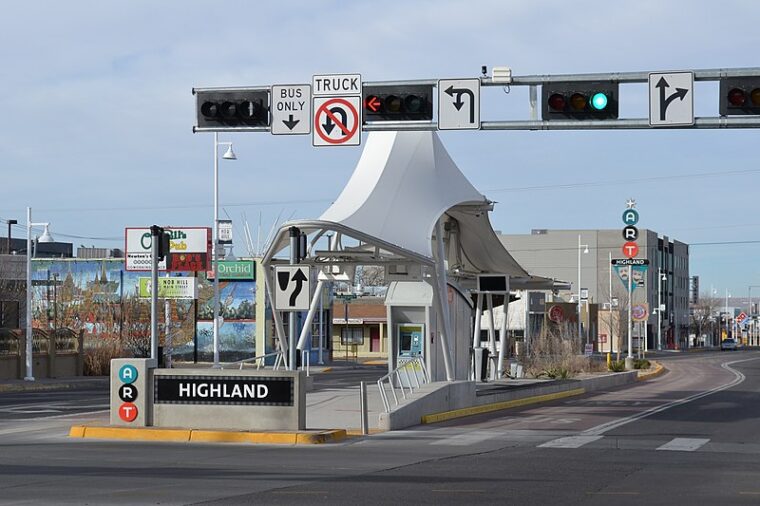
Bus Rapid Transit (BRT) systems can significantly reduce vehicle speeds and lower the overall number of traffic accidents and fatalities, a new study from the University of New Mexico shows.
The research, published in the journal Traffic Injury Prevention, examined the impact of the Albuquerque Rapid Transit (ART) system on Central Avenue, historically one of the most dangerous arterial roads in the country. The study found that the Bus Rapid Transit infrastructure alone — even before buses began operating — led to substantial reductions in vehicle speeds, particularly excessive speeding.
The findings show the potential of BRT systems to help cities struggling to improve safety on major arterial roads without sacrificing the ability to move large numbers of people efficiently. Building off of earlier research on traffic accidents, the study suggests that the infrastructure needed for BRT systems forces drivers to slow down. As urban areas across the United States look for innovative methods for reducing traffic accidents and fatalities, BRT may offer a win-win solution.
“We can improve the movement of people by enhancing transit while also improving safety on the corridor,” said Nicholas Ferenchak, an associate professor in civil, construction and environmental engineering at the University of New Mexico, in an interview with Government Market News.
In an earlier study from 2022 on Albuquerque’s Central Avenue corridor with the ART system, Ferenchak said, “we found a 65% reduction in serious injuries and fatalities along the corridor after installation. That was amazing.”
In the new study, Ferenchak and his colleague PhD student Ashish Ravi Joshi set out to understand in more detail what effect the BRT installation was having on drivers that led to fewer accidents. The researchers were particularly interested in the impact on what traffic engineers call “85th percentile speeds” — a measure of the fastest drivers on the road.
“When we see a reduction in the fastest drivers, you know that that’s also likely the most unsafe drivers as well,” Ferenchak explained. “So we’re really seeing a reduction in unsafe driving.”
The 85th percentile speeds decreased from 32.3 mph to 28.6 mph across the entire corridor, representing an 11.5% reduction. This decrease was even more pronounced in areas where general traffic lanes were converted to bus-only lanes, with some sections seeing reductions of up to 18.9% in 85th percentile speeds.
In cases of lane conversion to bus-only lanes, Ferenchak explained that there’s more “platooning” of vehicles and “less opportunity for people to kind of weave in and out of traffic and go speeding off.”
Those changes in BRT areas had a ripple effect across all of Central Avenue, as drivers become more aware and traffic was forced to slow down to accommodate new bus lanes. The study found speed reductions even on parts of the corridor that didn’t see any construction.
“Even if the entire corridor does not have BRT infrastructure, overall, it makes the corridor safe, even in the areas that didn’t have any construction,” said Ravi Joshi, another of the study’s authors, speaking to Government Market News.
Despite the ART system expanding the options for Albuquerque residents to move around the city, the researchers noted that public perception of the project has been mixed, particularly among local businesses that were impacted by construction and changes to the street layout.
“A lot of people, like business owners, were upset that, you know, it’s taking away from their business and customers,” Joshi said. But he added that perceptions seem to be shifting as people become more accustomed to the system. The researchers are hopeful that the new findings will help inform public discussions about BRT and similar projects in other cities.
When telling people in Albuquerque about their research showing reductions in traffic accidents, Ferenchak said, “almost everybody I talked to is really surprised.”
Photo by Camerafiend
The post Bus rapid transit can improve road safety, study shows appeared first on Government Market News.
